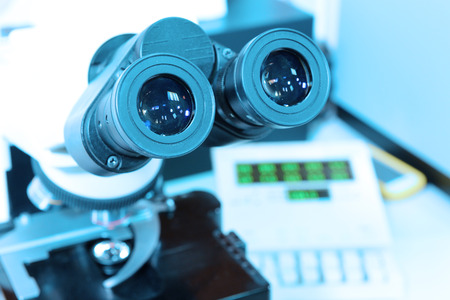Most of the common forensic handwriting analysis techniques require the right equipment. When it comes to considering the trade of a good and professional forensic document examiner, the most emphasis is placed on the training and experience of the person in question. A large part of the training during an apprenticeship is devoted to learning how to use the various equipment that is so vital to the craft. Some of the essential apparatus behind the craft include the following:

- Basic measuring tools
- Microscopes and magnification tools
- Light sources
- Photographic equipment
- Computer equipment
Basic Measuring Tools
Instruments are used for the simple measurements of key elements of the text to determine significant differences and discrepancies. A difference in the height of a particular letter, the width between them and word spacing could make all the difference. Some of these tools will include metric rulers, calipers, and various glass alignment plates. A magnifying eyepiece also has an engraved measurement scale for greater precision when comparing documents.
Magnifiers and Microscopes
A variety of microscopic equipment is used by forensic document examiners over many different cases to find tiny details impossible for the plain human sight to be able to see without any special equipment. A more careful analysis may require a stronger, stable microscope. Binocular microscopes allow the user to see through two eyepieces for a more comfortable experience and greater focus. The more expensive and more capable the microscope, the better the features. Don’t assume that higher is better. Go too high and the field of vision becomes far too narrow.
Light Sources
Most of the time this complex analysis cannot be carried out with the naked eye or even a straightforward microscope. There are plenty of altered documents with clues that are seemingly invisible, such as erased areas and indentations.
Analysts can use transmitted light, ultraviolet light, and infra-red light to uncover different issues. The transmits light is given by a light box with a treat fluorescent light bulb. UV and IR light sources provide simple changes in the light spectrum that reveal different marks and colors. This can help to highlight the subtle alterations in the ink type, watermarks and other chemical differences that can’t get observe under white light.
Photographic Equipment
Photographic equipment can be used in some ways to take advantage of the tools on offer. As we can see above. Still, cameras and video cameras add another element to microscopic equipment to provide a record of what is seen. Photographic equipment can also be used to working with the different lighting tools above. A camera with an IR or UV filter can clearly see the issues highlighted under the conditions and record them. This is all crucial for creating a solid record of evidence for a case. The criminal court needs more than just a verbal opinion. Photographs provide this physical evidence. The best-equipped labs will have a high-quality digital camera with all the right filters, lenses and extension tubes.
Computer Equipment
There are computer tools that can be used and analysts need to be able to determine forged documents and questionable documents that are not all handwritten. Computers are essential for record keeping. Photographs are a small part of the physical evidence that experts can present in court. Clients and examiners need a full, detailed report of the whole case, and this requires a computer with the right software.
